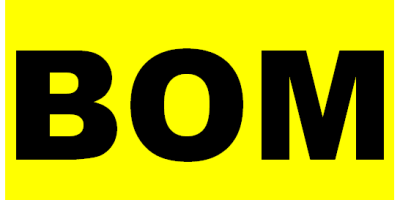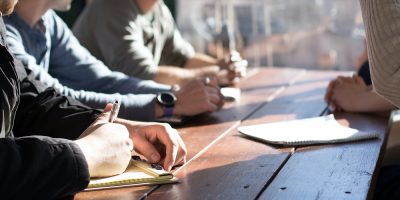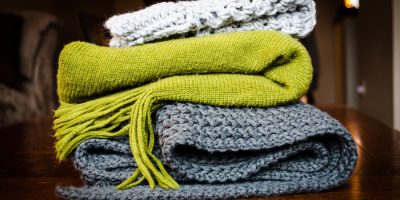Apparel production is a little bit clumsy process where different types of textile material need to be transformed into garments item according to the consumer’s demand. Nowadays apparel manufacturing becomes tough because fashion trend is changing quickly. When garments are manufactured in large scale, that time it treated as bulk production. Garment manufacturing came out from home or tailoring house after industrial revolution. There are two categories of apparel industry such as domestic manufacturer and export-oriented manufacturer. Usually, domestic manufacturers are set their production target by considering local market demand. But export oriented garments need to depend on foreign orders.
A garments factory needs to follow some particular steps before inserting any style or design in a particular line. All of we know it calls pre- production steps where some activities are


mandatory before proceed to bulk production. However, a garments factory needs to accomplish sampling, costing, production planning, material procurement and pattern making to get a final order from buyers. Once confirm final order then proceed to fabric cutting, printing, embroidery, sewing, thread trimming, washing, ironing, folding and packing to dispatch the finish goods to the respective buyer. All of these are a very common scenario in a running garments factory.
However, we will try to express all of these functions in details by the following article.
Sampling:
Sampling is a common practice where factory has to develop garment according to buyer’s provided specific design or particular tech sheet or a reference sample. Sampling is a mandatory task before step another process. A sample has to overcome several segments to obtain final approval from buyer on a particular design. There are different types of samples develop in sample room known as Proto sample, Fit sample; Size set sample, Sales man sample, production sample, Seal sample, Top of production (TOP) sample, Gold sample, and shipment sample etc.
Costing:
Profit is the optimum target of any business organization. Costing of garment is the cumulative cost of raw materials, trims price (including air cost & up charges if necessary) print cost (if available), washing cost, CM (cost of manufacturing) etc. It is assumed that the possibility of maximum profit margin drove us to chase the goal. So product costing before order placement is very important to achieve bulk order. Factory has to make individual cost sheet after developing each sample. Sometimes they have to make cost sheet on the basis of buyer’s reference sample. Then they have to send FOB (freight on board) price to buyer for judgment. It is known as price quotation. Lower price quotation will win the bid and lead you to the race than others.
Production Planning:
Once confirm bulk order factory has to prepare production planning. Time and action plan i.e. T&A chart is a compulsory part of this stage. T&A chart has to compile total timelines like how many days requires for material procurement when cutting task will start, pre-production sample submission deadline when to finish sewing and finishing, final inspection date and shipment date. Each part of the T&A chart has to keep some time to secure proposed delivery date.
Cutting:
Cutting is an important process in the garment industry because fabric saving and garment quality mostly depend on it. Fabric is the gist item of the garment which belongs about 70% of total garment cost. The quality of finish goods almost depends on the good practice of cutting room. In this process, first fabric rolls need to spread on a cutting table up to a certain height. Fabric spreading can be done by two ways like manual spreading and automated spreading. Once spreading task accomplished by cutting guy then, fabric is being cut into garment shapes or pattern and separated from the layer through cutting tools.
Sewing or Stitching:
A garments line are consist of several categories of sewing machines. Sewing machines are selected according to the garments type and stitching construction. Operators are set in a line according to column wise and sewing machines are laid in a raw. An operator can sew only one or two operations of the garment at a line. Individual operators are chosen according to their expertise and performance. Garment panels are sewn together to convert into finished goods in the sewing line by using several sewing machines. Usually, 2D fabric patterns are transformed into 3D forms through sewing process. Garments cut panels are feed at the start of the line, then go through the line gradually and at the end of the line a complete garment come out once pass out from the quality table. Usually, a sewing line formed by a bunch of sewing operators and helpers to feed them with cut parts, thread and other trims, quality inspector and one fully or partially dedicated supervisor. Each operator is assigned to run an individual sewing machine and using sewing threads to attach garment parts then forward to next operator.
Thread trimming:
Garments without any loose thread, less puckering and long tail are a basic quality requirement. Uncut thread usually reduces product quality. Uncut thread i.e. unnecessary thread should be trimmed out by operators during operations. Nowadays auto thread trimming machines are available to accomplish this task instantly.
Washing:
Washing is preferred to remove dirt and stains from complete garments. Another object of washing garments is to stop color bleeding and get special finishing. Factory has to do this job if buyer requires or wishes to bring any particular look to their garments.
Finishing:
Garment quality checking, measurement checking, pressing, ironing, and spot removing all are included in finishing. Once complete garments come out from production line it needs to check by the quality inspector to ensure garments quality. Usually, quality team will accomplish their job through visual inspection and ensure that garments are being made as per buyer quality standard. Besides this, they have to remove various kinds of oil stain, marks and hard stain from garments by using various chemicals (solvents). Finally finishing guy has to do pressing and ironing to remove crease mark and get shiny look.
Folding and packaging:
Folding method is different from buyer to buyer and product to product. Each buyer has different packaging strategy. Each folded garments need to insert into a poly bag with tissue paper, silica gel or cardboard. Before insert into poly bag packing guy has to attach hang tags, special tag and prices stickers by tag pin or threads. Internal quality team may do a random inspection to ensure product standards.
Other Processes:
Nowadays garments cannot be marketable without having an extra ornamental task like printing, embroidery, special washing, special garment dyeing, hand embroidery etc. These decorative tasks bring a special look that may increase additional appeal to consumers for your garments.
Final Inspection and dispatch:
Garments manufacturers have to do a final inspection before dispatching finished goods to buyer’s destination. Usually, it was done by buyer quality assurance (QA) team. Sometimes a third party quality auditor team is assigned to do this job. They will do a random inspection to ensure product quality and provide a green signal for dispatching. It’s a mandatory task before ex-factory.
You may like: How to calculate a basic T-shirt Consumption





Leave a Reply
You must be logged in to post a comment.